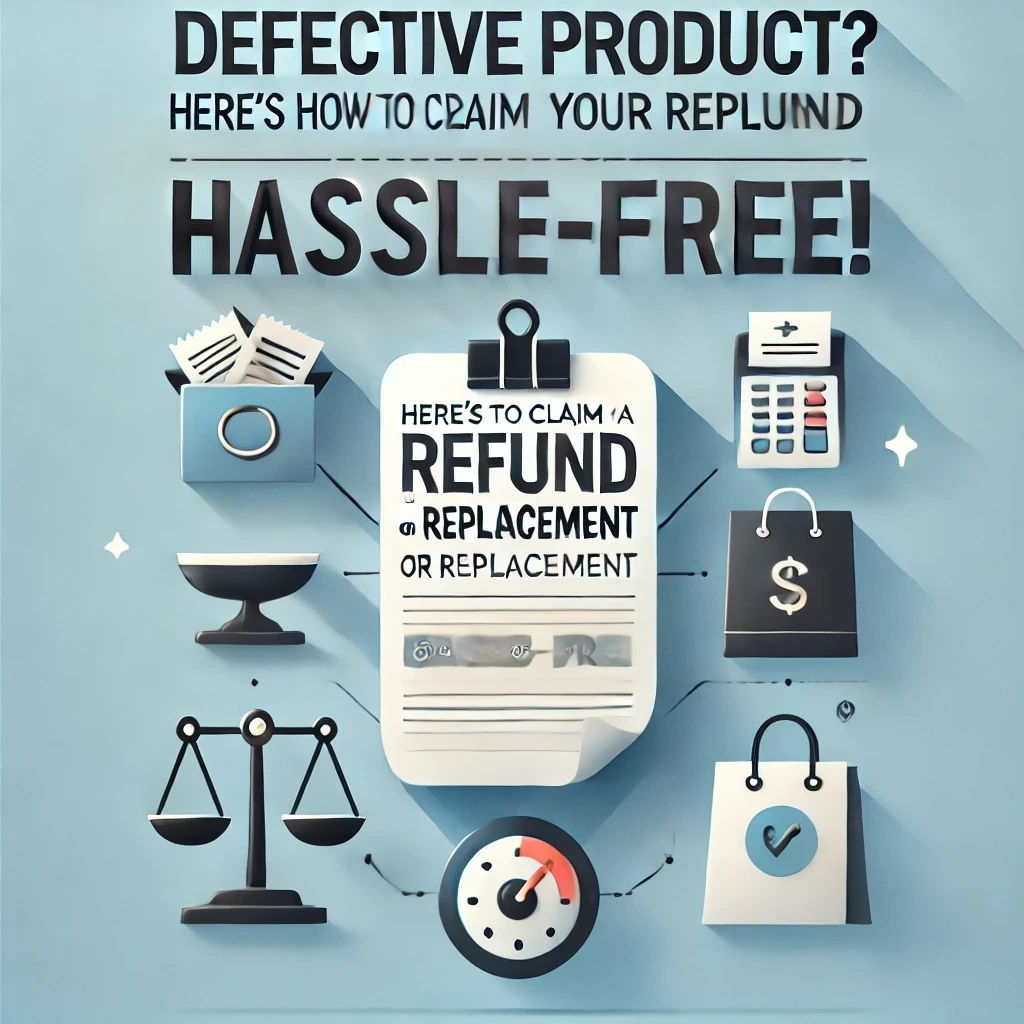
Can You Get a Refund for Items Damaged During Shipping?
Understanding Your Rights
When you order products online, you expect them to arrive in perfect condition. But what happens when they don’t? If you've ever received a broken item or found your shipment arrived damaged, you may have wondered about your rights as a consumer. Can you get a refund? Are you entitled to a replacement? This blog post seeks to clarify the complexities surrounding refunds for items damaged during shipping. We will explore the various factors at play, including the shipping terms, the responsibility of the seller, and how shipping carriers handle claims. Understanding these elements is crucial for every online shopper, as it empowers you to act effectively and know your rights. Let’s dive into this topic and ensure you’re well-informed for your next purchase.
Key Takeaways
- Know Your Rights
- Seller Responsibilities
- Shipping Carrier’s Role
- Documentation is Key
- Time Limits for Claims
As a consumer, you have specific rights when it comes to damaged goods. Familiarizing yourself with these can help you navigate claims.
Sellers are generally liable until the item is delivered in good condition, which includes appropriate packaging and handling.
Shipping carriers have their own policies regarding damaged items, which can affect how reimbursements are processed.
Proper documentation of the damage is crucial when filing a claim for a refund or replacement.
Be aware of any time limits for filing claims regarding damaged goods to ensure your claim is valid.
Step-by-Step Guide to Handling Damaged Items
- Step 1: Inspect the Package Immediately
- Step 2: Document the Damage
- Step 3: Check the Seller's Return Policy
- Step 4: Contact the Seller
- Step 5: File a Claim with the Shipping Carrier
- Step 6: Follow Up
- Step 7: Seek Legal Advice if Necessary
As soon as your package arrives, inspect it for any visible damage. Take note of any dents, tears, or other signs of mishandling. This initial inspection is vital as it establishes the condition of the item upon delivery.
Use your smartphone or camera to take clear pictures of the damaged item and its packaging. Ensure you capture all angles and details, as this documentation will be critical in supporting your claim.
Before taking further action, review the seller’s return policy. Many online retailers have specific procedures for handling damage claims, including required timeframes for reporting issues.
Reach out to the seller’s customer service department. Provide them with details regarding the damage and share your documentation. Be polite but assertive in asserting your rights.
If the seller directs you to the shipping carrier for the claim, visit their website to file a claim. Most carriers have online forms and require similar documentation. Pay close attention to any deadlines.
If you don’t hear back within the expected timeframe, follow up with both the seller and the shipping carrier. Persistence can be key in ensuring your claim is processed promptly.
If your claim is denied or unresolved, consider consulting a legal expert. A knowledgeable attorney can provide insight into your rights and help you navigate the legal landscape.
Legal Insights on Refunds for Damaged Items
Understanding the legal landscape surrounding damaged goods during shipping is crucial for consumers. The Uniform Commercial Code (UCC) governs sales of goods in the United States and establishes that the seller bears the risk of loss until the goods are delivered. This principle implies that if an item arrives damaged, the seller is responsible for remedying the situation, either through a refund or replacement. However, this responsibility can vary based on the shipping terms agreed upon at the time of purchase. If you opted for standard shipping, the seller may be liable for damages incurred during transit. Conversely, if you selected an expedited shipping method, you might find that liability shifts depending on the carrier’s terms. Additionally, consumers should be aware of the concept of 'contributory negligence.' If a buyer fails to properly secure or protect the item during transit and it results in damage, the seller's liability may be reduced. Real-world cases have demonstrated courts siding with consumers who presented thorough documentation of the damage and followed appropriate claim procedures. Remember that laws can vary by state; for instance, California has robust protections for consumers under the Song-Beverly Consumer Warranty Act, which may provide additional recourse for shoppers facing issues with damaged goods.

Real-Life Examples of Damage Claims
- Case Study 1: The Broken Vase
- Case Study 2: The Cracked Television
In this case, a customer ordered an expensive vase online. Upon delivery, the box showed signs of significant damage, and the vase was shattered. The customer immediately took pictures of the damaged box and vase, followed the seller's return policy, and contacted customer service. The seller issued a full refund after verifying the claim, showcasing the importance of prompt action and documentation.
A shopper purchased a flat-screen television from an online retailer. When it arrived, it had a noticeable crack on the screen. The buyer documented the damage extensively and reviewed the return policy, which allowed for claims of damage during shipping. After filing a claim with both the seller and the shipping carrier, the customer received a replacement unit after three weeks. This case highlights the importance of understanding the shipping carrier's role and following up diligently.
FAQs
- What should I do if my item arrives damaged?
- Am I entitled to a refund or replacement?
- How long do I have to file a claim?
- What if the seller refuses to issue a refund?
- Can I return damaged items to the store?
If your item arrives damaged, start by inspecting the package and documenting the damage with photos. Check the seller’s return policy and reach out to customer service with your evidence. Depending on the seller's instructions, you may need to file a claim with the shipping carrier.
Under most circumstances, if an item is damaged during shipping, you are entitled to either a refund or replacement. The exact remedy will depend on the seller’s return policy and the shipping terms agreed upon at the time of purchase.
The time limits for filing a claim can vary widely depending on the seller and the shipping carrier. It’s crucial to check their policies; generally, claims should be filed as soon as possible, often within a few days of receiving the damaged item.
If a seller refuses to issue a refund for a damaged item, review the return policy and consider escalating the issue. You may need to file a complaint with consumer protection agencies or seek legal advice if necessary.
If you purchased an item from a physical store and it arrived damaged, you generally can return it to the store. Be sure to bring documentation of the damage and the original receipt to facilitate the return process.
Additional Resources for Consumers
For further information on consumer rights and handling damaged items, visit the Federal Trade Commission's website, or reach out to your local consumer protection agency. Legal advice may also be sought through local law firms or legal aid organizations that specialize in consumer rights.
Wrapping Up: Your Rights Matter
In conclusion, navigating the landscape of refunds for items damaged during shipping can be complex, but understanding your rights and the proper steps to take can empower you as a consumer. Always inspect your packages upon arrival, document any damage meticulously, and don’t hesitate to assert your rights. Whether it’s a refund or a replacement, you have options available to you, and knowing how to utilize them is key. Remember that in the world of online shopping, being informed is your greatest asset.
Need More Help?
If you have further questions about your rights or need assistance with a damaged item claim, don’t hesitate to reach out to me, Lex Harper. Visit my website or contact me directly for expert legal advice tailored to your situation. Together, we can ensure your consumer rights are protected!





Comments